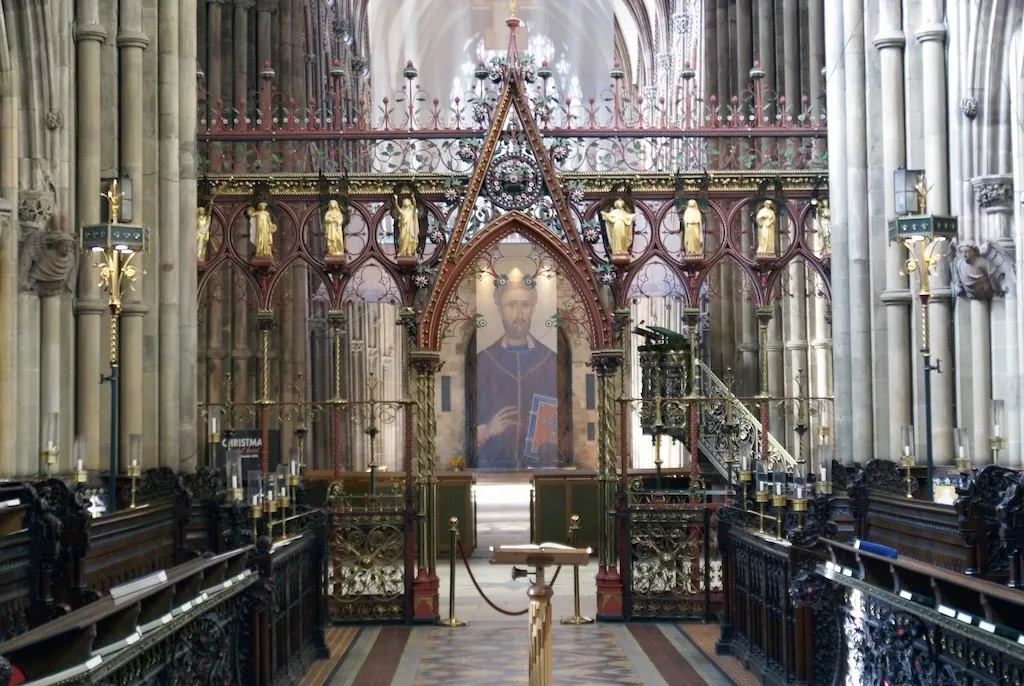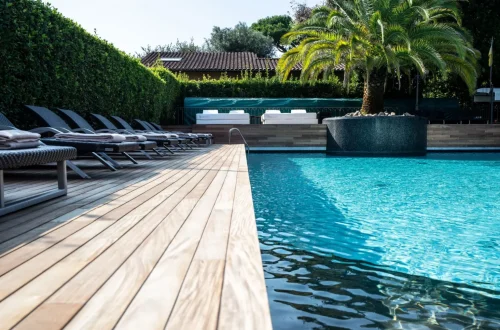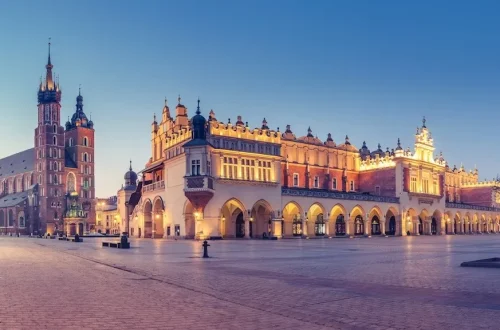England has 62 Anglican and Catholic cathedrals – that’s a lot; enough, in fact, for some to get lost in the throng. And Lichfield, although notable for being one of only three to have three spires, risks losing out to the major players such as St Paul’s, Canterbury, Salisbury and Westminster.
So is Lichfield worth a visit? The short answer is ‘yes’. The city has lots to see, although its uneasy balance of historic architecture and modern concrete is sometimes a bit jarring. But don’t be put off by that. The best bits are outstanding, not least the cathedral itself. It stands at the heart of the city surrounded by the Minster and Stowe pools to the south and east, with the cathedral school to the north and the house of Erasmus Darwin to the west – more about him in a bit.
An early centre of Christian worship
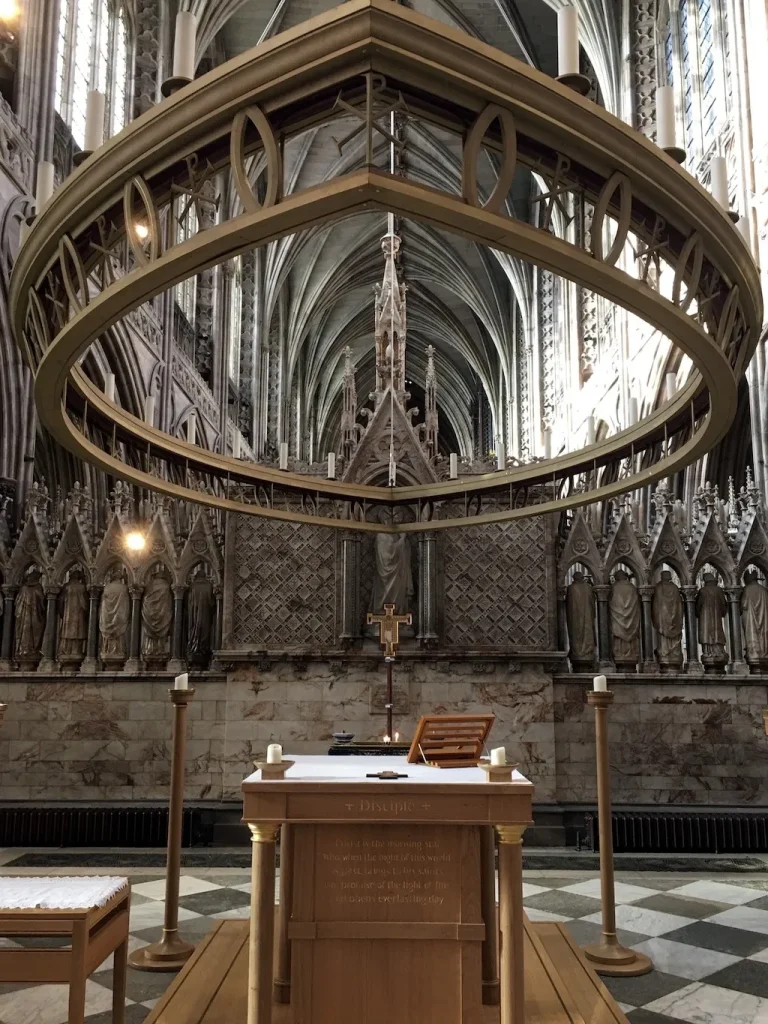
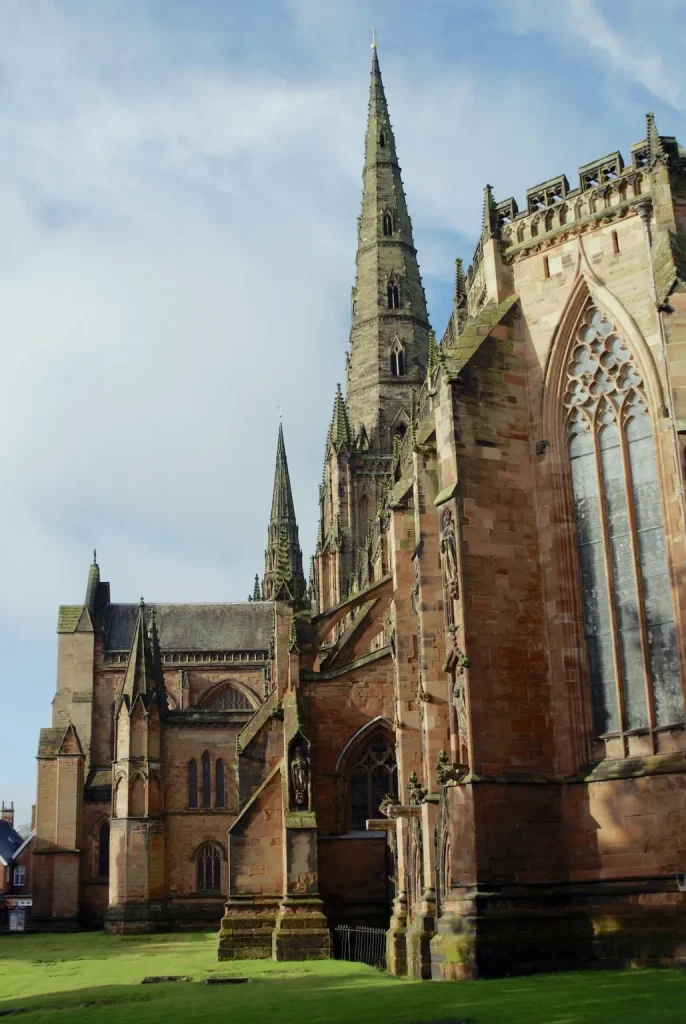
The first cathedral in Lichfield was consecrated in 700 making the city among the earliest centres of Christian worship in the UK. This was replaced by the Normans, who built a new one in the same location in a display of “mine’s better than yours”. However, the cathedral that we see today was started in 1330 – replacing most of the Norman structure – but a lack of building knowledge resulted in the weight of the stone used in the vaulting pushing the building’s wall outwards! Around 300 tons of stone was removed in 1788 to prevent the problem from getting worse.
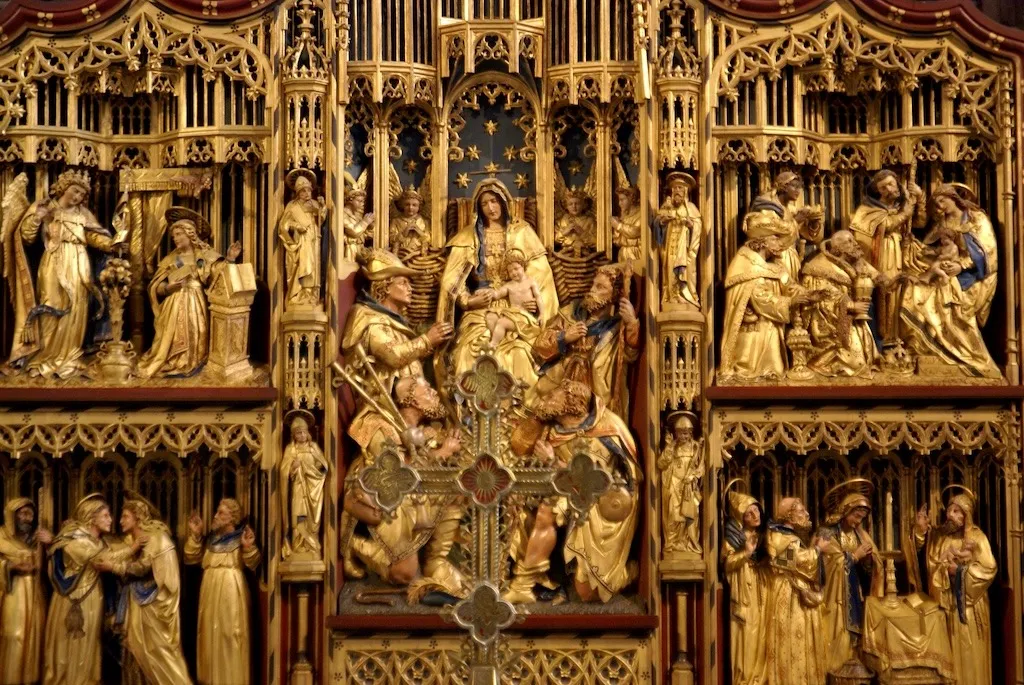
Entrance is free, although if you want a guided tour, which lasts around an hour, it’ll be £5 – a bargain, I think. I chose to wander around by myself and soak up the atmosphere. A very pleasant 45 minutes of quiet contemplation.
The greatest treasure associated with the cathedral is the Lichfield Gospels, also known as the St Chad’s Gospels, which dates back to around 720. Written in Latin, with Welsh notations, they are similar to the famous Lindisfarne Gospels. The manuscript is on display in the Chapter House.
Doctor, inventor and poet
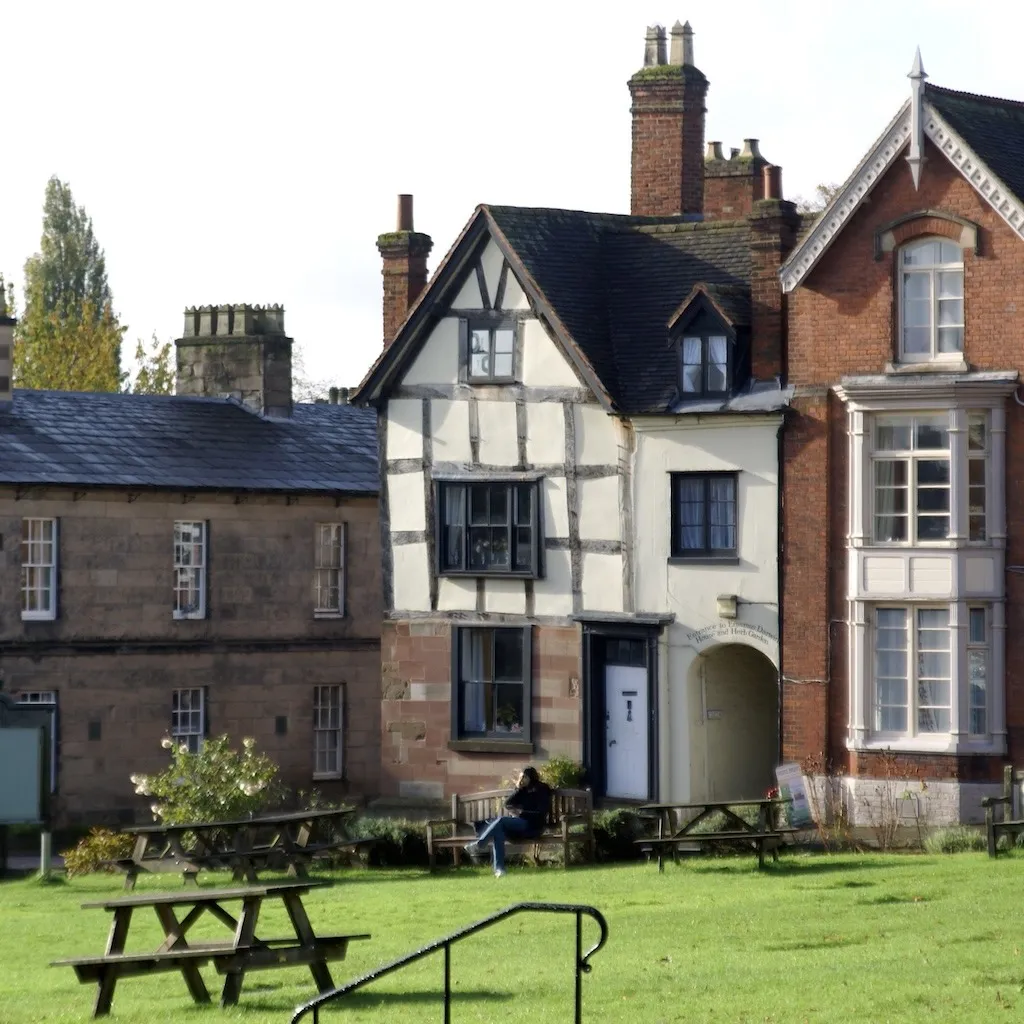
Darwin House is a museum that was once the family home of the British physician, poet and botanist Erasmus Darwin (1731 – 1802). It showcases the extraordinary breadth of his interests and achievements, which laid the foundations for his famous grandson Charles.
Erasmus was also an inventor – he designed a flushing toilet and a speaking machine – and was especially interested in the medicinal qualities of plants. He put his theories into practice and used his botanical distillations to treat his patients. He was firmly against the slave trade and turned down an invitation by George III to become his personal physician because of his republican philosophies. He and his wife – who maintained the garden of medicinal plants – had 14 children!
Stand by for action!

My main reason for visiting Lichfield was to see an exhibition at The Hub of St Mary’s – a multi-use heritage and arts venue in the centre of Lichfield, sat above the library and next to the market square.
‘54321 FAB! The Art of Supermarionation’, which ran from 23 July – 2 November 2024, was dedicated to the puppet shows of Gerry and Sylvia Anderson, a massive slice of my childhood. Original puppet characters from Thunderbirds, Captain Scarlet, Stingray and Joe 90 filled out display cabinets that brimmed with vintage memorabilia. Toys, jigsaws, puzzle books and model vehicles from youth were lined up like lost treasures. I found myself saying “I had that!” and “I remember it being bigger!” time after time as I perused the items on show. The retrospective triggered a mix of nostalgia and excitement. For the space of an hour I was six again…
Purely by chance, my visit coincided with a display of some Star Wars costumes. For one day only the streets of Lichfield were patrolled by Imperial Storm Troopers, droids and assorted dodgy aliens. It was a lot of fun and the organisers were especially friendly. The highlight? Watching two Troopers walk around the library ensuring ‘shhhh…’ was maintained. Just brilliant!

The home of the dictionary
Erasmus Darwin isn’t the city’s only famous son. It can also lay claim to Samuel Johnson, the man who gave us the Dictionary of the English Language. You can visit the family home, which is just a short walk from the cathedral, to learn more about the world’s most famous compiler of words. Better still, it’s free to enter.
For pub quiz nerds, the last word in Johnson’s original edition of his dictionary was “zyxt”, an obsolete Kentish form of the second person singular present indicative of “see”.
If you’ve got time during your stay, you could go and visit Wheate & Son’s Toy Museum on Market Street or maybe take a look at the Lichfield Antiques Centre on Minster Pool Walk. It contains a wide range of vintage, antique, retro, collectable and period items from more than 60 specialist dealers.
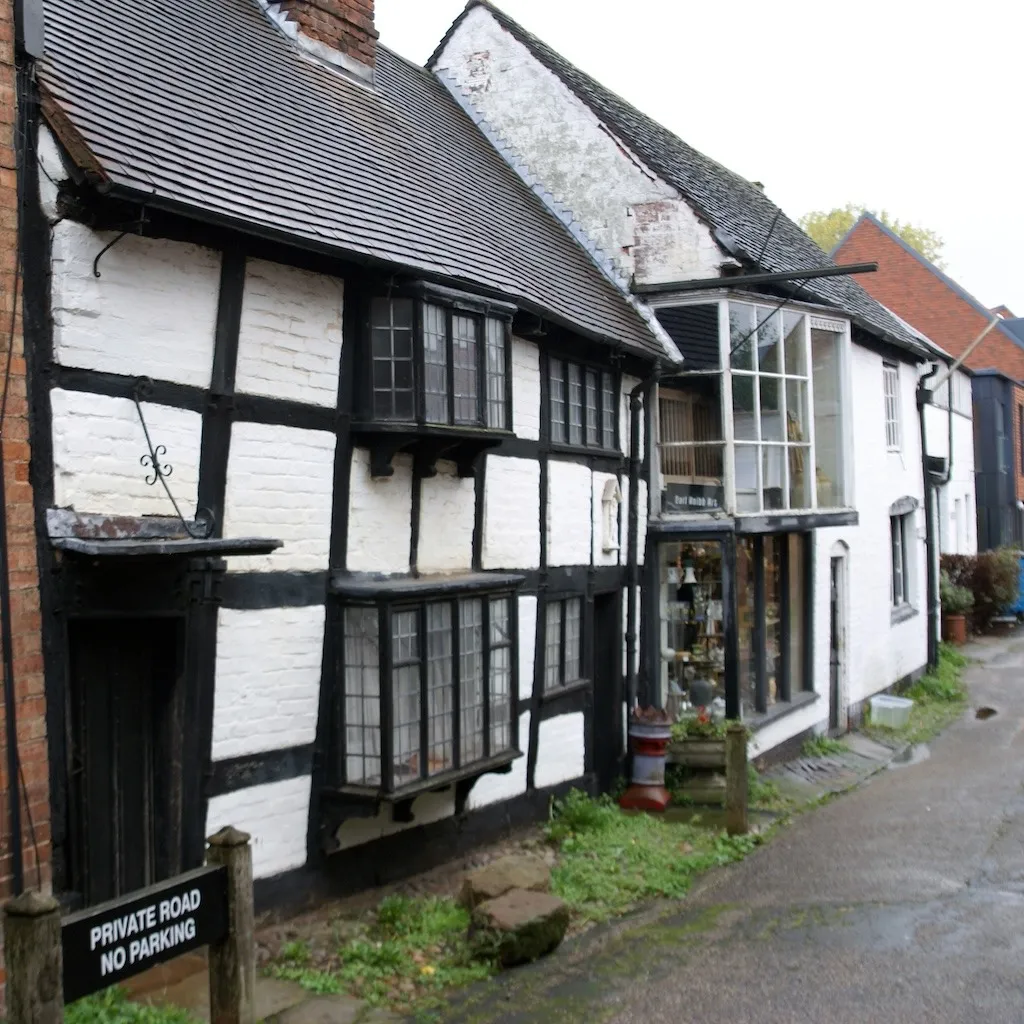
A little something to eat
The centre of the city is packed with bars and restaurants. I had my dinner in the Thai Rainbow, which was very good. I’d also been tempted by The Greek Chef as the menu sounded great and the reviews were encouraging. I’d certainly have tried it out if I’d been staying a second night.
My main complaint about Lichfield is getting there. The train from Birmingham New Street stops at every hole in the hedge before arriving at Lichfield City station. It’s a minor quibble, I admit, and it didn’t detract from my stay. Just make sure you plan your train journey with care if you’re arriving by rail.

